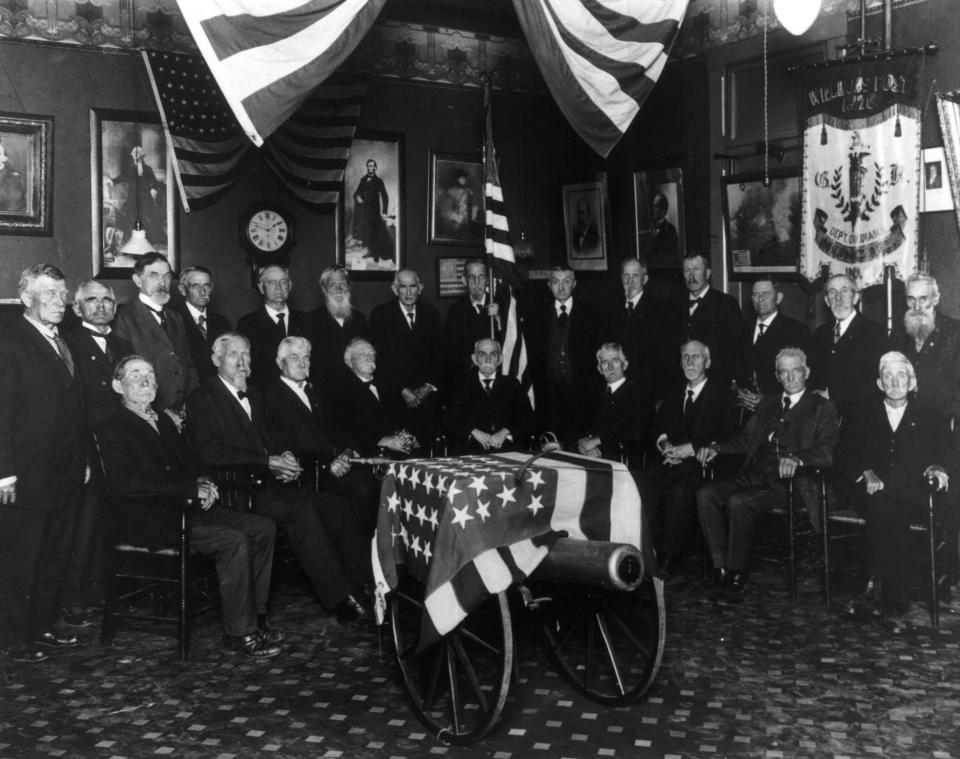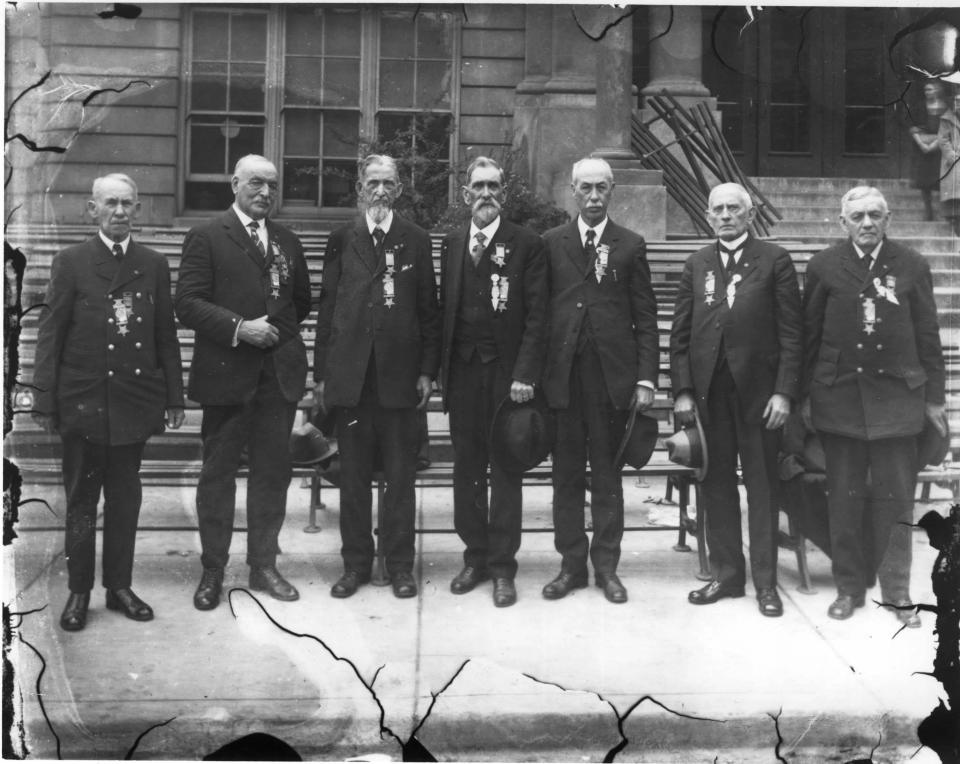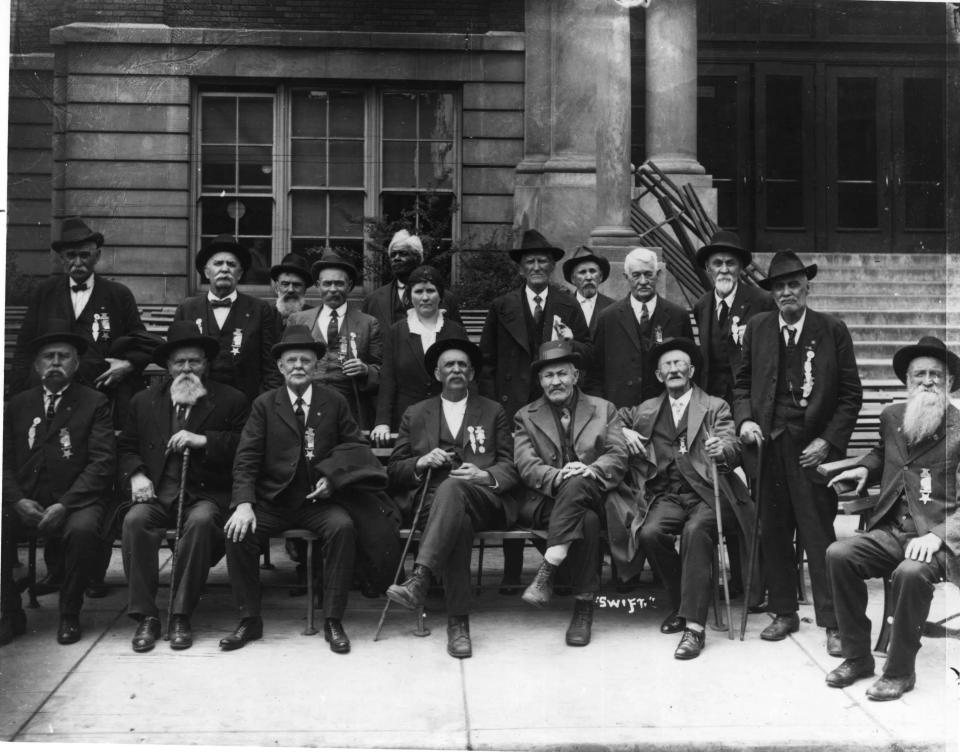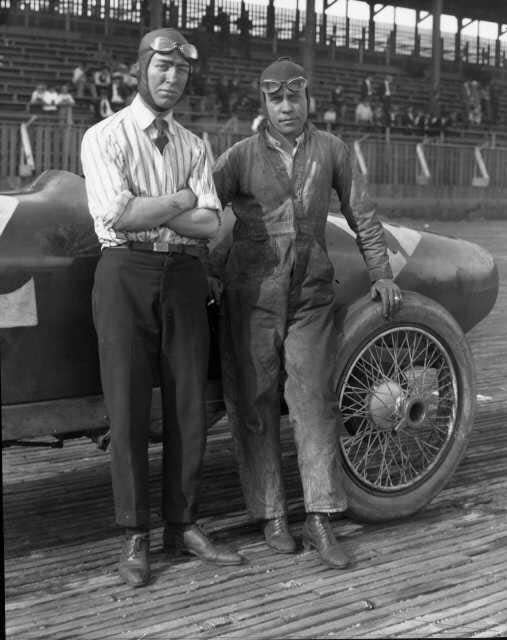Bygone Muncie: City celebrated Memorial Day in 1922 with flowers, flags, parade and tributes
Before Congress fixed Memorial Day as a federal observance on the last Monday of May, many Americans, especially in the North, celebrated the holiday on May 30. A century ago, in 1922, Memorial Day fell on a Tuesday.
The beautiful weather in Muncie that day made for a splendid commemoration. The Muncie Evening Press declared that “Muncie had one of the most successful Memorial Day celebrations in its history. Early in the morning, throngs of citizens were flocking to Beech Grove Cemetery, their arms or automobiles laden with flowers for the graves.” Muncie’s florists reported “unprecedented business” by 9 a.m.
Most factories and retailers closed for the day, as did city and county schools, the post office and the Muncie Public Library. And with the exception of City Court, municipal and county government offices also shut down in observance. As Beech Grove was being “decked with flowers, the remainder of the city resembled nothing so much as a huge American flag. From office windows, doorways, flagstaffs and on wires strung across the main streets, the national bunting greeted the passerby on every hand,” as told by the Evening Press.

For subscribers: Finding Beech Grove's future after 180 years laying to rest mortal remains of Muncie
Memorial Day began not long after the Civil War, merging with a late May observance called Decoration Day. Early traditions varied, but the day served as a solemn remembrance of those who died during military service. Though many aged veterans still lived to observe Memorial Day in 1922, hundreds had already gone to their graves in cemeteries across Delaware County. In the years that followed the Spanish-American and First World wars, the day took on renewed significance for those wishing to honor the fallen from those conflicts.
In 1922, according to the Press, “Muncie and Delaware County citizens, old and young alike, united in observance of Memorial Day and fitting tribute was paid the living and the dead soldiers, who in past wars fought for peace and preservation of a united democracy.”

Locals held memorial services in cemeteries across East Central Indiana, but the biggest observance was at Beech Grove Cemetery, Muncie’s only municipal burial ground. Around 1:30 pm, hundreds of Munsonians began lining up on North Jefferson and South Madison streets for a grand parade to the cemetery. The Evening Press reported in late afternoon that “survivors of the Civil War, those of more recent Spanish-American and World wars, joined citizens generally in the march to Beech Grove Cemetery where the program was held.”
More Bygone Muncie: Beech Grove Cemetery, Memorial Day observances grew together over the years
On Madison Street, a platoon of Muncie Police Department officers led a column of marchers that included the Remington Band, a color guard, a ceremonial firing squad, and members of the Veterans of Foreign Wars and American Legion. At the end of the column marched fraternal and sororal members, including the Independent Order of Odd Fellows, the Fraternal Order of Eagles, and the Modern Woodmen of America.
Watson’s Girls Band led the division on Jefferson Street. Packs of city schoolchildren followed, along with a drum corps, Spanish-American War veterans, and members of the Grand Army of the Republic, the celebrated Civil War veterans group. Many G.A.R. members were too old to march, so Munsonians drove them in procession to the cemetery in fancy cars.

Charles Kimbrough, the commander of Williams Post #78 of the G.A.R., began the services at Beech Grove after both groups arrived. Fred Jewett followed by reciting Abraham Lincoln’s Gettysburg Address. Edward Toner from Anderson provided the formal speech. He spoke about the “two wars, that of the rebellion and the World War, giving occasional personal observations of the self-sacrifice of soldiers and of the gratitude of their countrymen.” When Toner finished, Kimbrough thanked everyone for coming and Reverend S.G. Fisher, the pastor at the Jackson Street Christian Church, closed the service with a prayer.
In another Memorial Day tradition familiar to Hoosiers, 27 drivers competed in the tenth running of the Indianapolis 500. The Muncie Morning Star reported the next day that Jimmy Murphy “carved his name further in the hall of motor fame today when he flashed across the wire as winner of the 500-mile automobile race at the Indianapolis Motor Speedway.” Murphy was accompanied by his riding mechanic Ernie Olson. The pair won the contest in front of an unprecedented 135,000 spectators. Murphy had “shot into the lead at the start and never relinquished it during one instant of five hours of thrilling driving.”

In other Memorial Day sporting news, the Muncie Shamrock Nine lost to Dunkirk in intercity baseball play, 4-3. But at North Walnut Street Park, the Muncie Athletics beat the Indianapolis Hoosier Cubs 6-5 in 10 innings. Their win had “the Muncie crew at an even break on the season, having lost and won one game each from the Randolph County Greys and the Hoosier Cubs.”
Some Munsonians celebrated the day with a little too much cheer. A Star reporter joked the next day that a “Memorial Day spirit got the better of Sam Weaver and John Swelgart yesterday, so they decorated their interiors with the stalwart variety of liquor and then began to decorate various portions of the southside.” They were arrested and charged with public intox and “now decorate the county jail.”
For theatergoers, the city’s vaudeville and movie houses provided a variety of stage and screen entertainment. The Strand offered “Burn ‘Em Up Barnes,” an auto racing film appropriate for the day. The Star featured no less than five vaudeville acts and a special screening of “Nineteen and Phyllis.” At Columbia Theatre, patrons could catch Wallace Reid in “Across the Continent.” At the Liberty, Charley Murray, a local vaudeville talent who made it big in silent-era Hollywood, starred in “Love, Honor, and Behave.” And finally at the Wysor Grand, Munsonians could enjoy the adventure, “Reported Missing” or the comedy, “The Piper.”
Bygone Muncie: Local movie theaters, drive-ins and nickelodeons through the years
We’ve changed much in the past century, but thankfully Memorial Day remains a special observance. I do find it unfortunate that we’ve lost the grand parades, the arresting city-wide displays of patriotism, and the overabundance of floral decorations. Such expressive tributes publicly and collectively recognized the great generations that have come and gone.
No matter how we celebrate, we should never forget that Memorial Day serves to especially honor those men and women who made terrible sacrifices in war. If you have a moment this weekend, I encourage you to visit Beech Grove, Tomlinson, Elm Ridge, or any of the 100 or so cemeteries scattered across Delaware County. We owe much to those interred.
Chris Flook is a board member of the Delaware County Historical Society and is the author of "Lost Towns of Delaware County, Indiana" and "Native Americans of East-Central Indiana." For more information about the Delaware County Historical Society, visit delawarecountyhistory.org.
This article originally appeared on Muncie Star Press: Bygone Muncie: How the city celebrated Memorial Day in 1922

